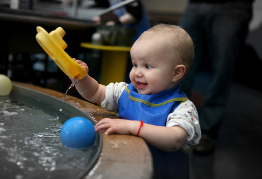Session 4
1. Session 4
1.1. Get Focused
Session 4: Becoming an Early Childhood Professional
Getting Focused Activity: Balancing the Day to Meet Children’s Needs
Just like adults, children need time—time alone, time together, active time, and quiet time. When children have predictable schedules, they feel more secure. Predictable does not mean rigid—schedules need to allow for some individual differences in children.

© emin kuliyev/shutterstock
As a member of the early childhood professional’s team, you will likely be involved or assist in the planning of activities at the centre.
If you were able to plan a perfect day for yourself, what would be the key events you would be sure to include? Brainstorm a list on a piece of paper. Your ideas cannot include things like magical speed travel; instead, your ideas should include activities that are potentially possible to achieve within the day.
Did your list include a time to rest and relax, a time to be alone, a time to be with friends or family, and a time to get something accomplished?
Planning is important because if we don’t plan how to use our time, we often end up not using time well.
Use the Getting Focused Activity: My Perfect Day chart to plan your ideal 24-hour day from the activities you brainstormed above.
When you have completed the chart, share your plan with a learning partner and compare your days. Use the following questions to start a discussion:
- How are your days similar?
- How are your days different?
- Do your days have a lot of variety of activities?
- Were you able to schedule all the activities you wanted to accomplish within the time?